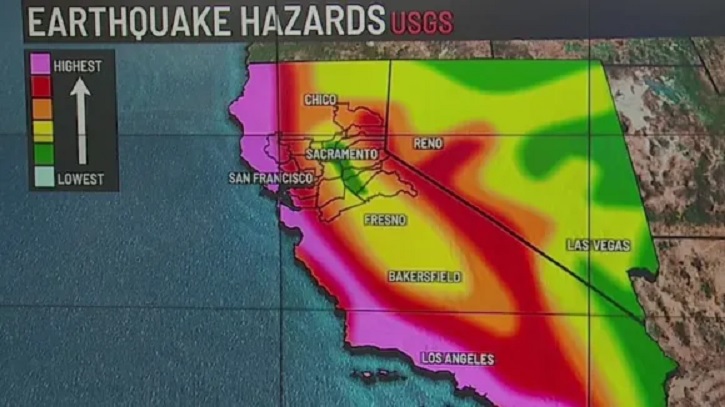|
Getting your Trinity Audio player ready...
|
Seismologists and emergency planners are sounding the alarm about the escalating risk of a major earthquake striking California soon. However, not all areas of the Golden State face equal peril from such a catastrophic event.
According to experts, the region least likely to experience significant shaking and damage is the vast agricultural heartland known as the Central Valley.

The Central Valley, a flatten expanse stretching over 450 miles from Redding to Bakersfield, is situated on relatively stable bedrock far from the volatile tectonic boundaries that make other parts of California so earthquake-prone.
The Valley floor is not adjacent to any major faults,
explains Dr. Jascha Polet, a geophysicist at Cal Poly Pomona.
The big hazards are to the east along the Sierra Nevada range and to the west in coastal areas.
This geographic fortune arises from the Valley’s unique geologic history.
About 200 million years ago, this region was the edge of the North American tectonic plate,
says Dr. Polet.
While continental drift carried California westward, shearing and uplifting created the coastal ranges and Sierra Nevada mountains on either side, the Valley floor remained relatively undisturbed.
That’s not to say the Central Valley is entirely earthquake-safe. Smaller local faults crisscross the region, with the potential to cause moderate shaking and localized damage. The USGS estimates the likelihood of a 6.7 magnitude quake striking within the Valley over the next 30 years is about 16 percent.
But compared to the towering hazard facing the Los Angeles basin, San Francisco Bay Area, and other urban centers astride the volatile San Andreas fault system, seismic risks in the Central Valley are relatively low.
Still, emergency planners urge Valley residents to remain vigilant and prepared.
Earthquakes can be deceptive,
warns Kelly Huston, Deputy Director of the California Office of Emergency Services.
Even areas removed from major faults can experience shaking from distant quakes, which can trigger fires, rupture utilities, and damage vulnerable structures.
Minimizing earthquake impacts requires a multi-layered strategy combining public awareness, stringent building codes, retrofitting of older structures, and robust emergency response capabilities.
Communities throughout the Central Valley take part in the annual Great ShakeOut earthquake drill, and the California Earthquake Authority promotes affordable insurance policies for homeowners and renters.
As one of the world’s most seismically active regions, California can never eliminate earthquake risk entirely.
But through diligent planning and precautions, the Central Valley may avoid the worst when the long-awaited “Big One” finally strikes.
California News: Heartbreaking Tragedy: Young Mother Plunges to Her Demise in Arizona Hiking Accident



